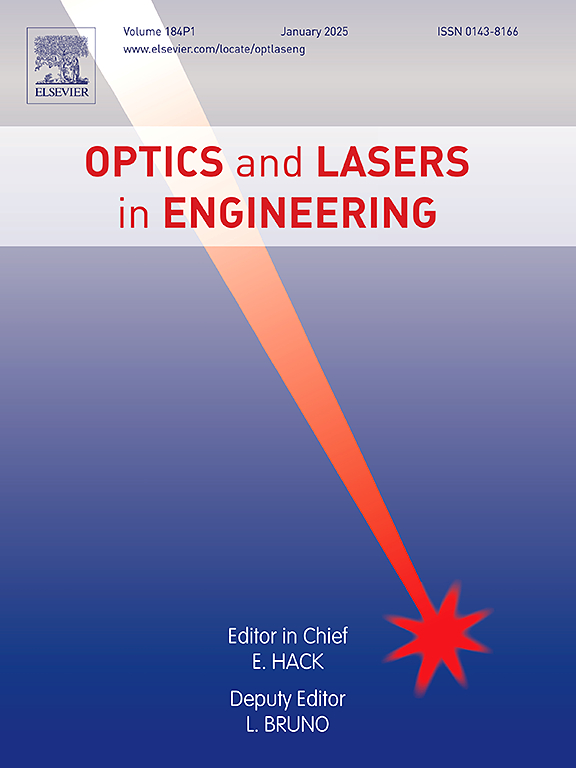Enhanced association and detection accuracy in multi-object tracking with camera-LiDAR Data Fusion
IF 3.7
2区 工程技术
Q2 OPTICS
引用次数: 0
Abstract
Traditional multiple-object tracking methods employ single sensors, such as optical LiDAR or cameras. However, using only a single sensing modality may cause information loss, which impairs the tracking performance. Thus, the present study proposes an object tracking system in which 2D and 3D detection boxes acquired by a camera and LiDAR sensor, respectively, are combined and preprocessed before being input to the tracker. The efficiency of the association algorithm used to match the detection boxes with existing target boxes is enhanced by utilizing a simple Intersection over Union (IOU) measure and prioritizing the high-confidence 3D detection boxes in the matching process. Moreover, following the association process, the 2D information is used to update the state of the 3D tracking boxes in the following image frame, thereby improving the stability and continuity of the 3D trajectories and enhancing the tracking performance. The performance of the proposed method is evaluated using the HOTA and sAMOTA metrics. The results confirm that using complementary information obtained from 2D and 3D detectors significantly improves the accuracy and robustness of the object tracking process.
摄像机-激光雷达数据融合提高了多目标跟踪的关联和检测精度
传统的多目标跟踪方法采用单个传感器,如光学激光雷达或摄像机。但是,仅使用单一感知模式可能会导致信息丢失,从而影响跟踪性能。因此,本研究提出了一种物体跟踪系统,该系统将分别由相机和LiDAR传感器获取的2D和3D检测盒进行组合和预处理,然后输入到跟踪器中。利用简单的交联度量,并在匹配过程中优先考虑高置信度的三维检测盒,提高了检测盒与现有目标盒匹配的关联算法的效率。在关联过程之后,利用二维信息更新下一帧图像中三维跟踪框的状态,从而提高了三维轨迹的稳定性和连续性,增强了跟踪性能。使用HOTA和sAMOTA指标对所提方法的性能进行了评估。结果表明,利用二维和三维探测器获得的互补信息显著提高了目标跟踪过程的准确性和鲁棒性。
本文章由计算机程序翻译,如有差异,请以英文原文为准。
求助全文
约1分钟内获得全文
求助全文
来源期刊

Optics and Lasers in Engineering
工程技术-光学
CiteScore
8.90
自引率
8.70%
发文量
384
审稿时长
42 days
期刊介绍:
Optics and Lasers in Engineering aims at providing an international forum for the interchange of information on the development of optical techniques and laser technology in engineering. Emphasis is placed on contributions targeted at the practical use of methods and devices, the development and enhancement of solutions and new theoretical concepts for experimental methods.
Optics and Lasers in Engineering reflects the main areas in which optical methods are being used and developed for an engineering environment. Manuscripts should offer clear evidence of novelty and significance. Papers focusing on parameter optimization or computational issues are not suitable. Similarly, papers focussed on an application rather than the optical method fall outside the journal''s scope. The scope of the journal is defined to include the following:
-Optical Metrology-
Optical Methods for 3D visualization and virtual engineering-
Optical Techniques for Microsystems-
Imaging, Microscopy and Adaptive Optics-
Computational Imaging-
Laser methods in manufacturing-
Integrated optical and photonic sensors-
Optics and Photonics in Life Science-
Hyperspectral and spectroscopic methods-
Infrared and Terahertz techniques
 求助内容:
求助内容: 应助结果提醒方式:
应助结果提醒方式:


